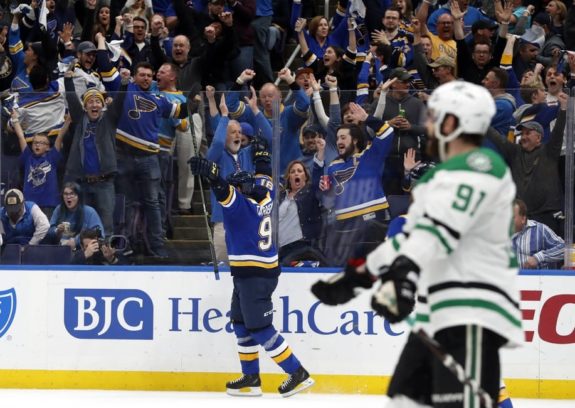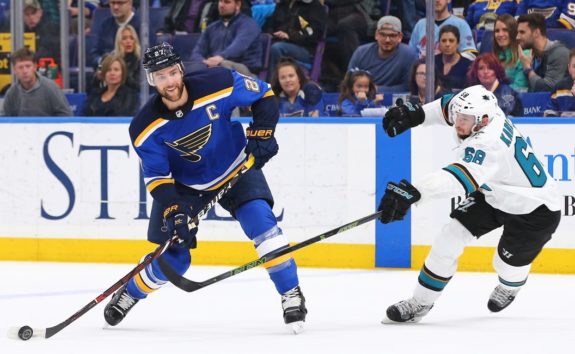If you could travel back in time to Jan. 3, the idea that the St. Louis Blues would be in the second round of the NHL Playoffs would be absolutely laughable. At that time, they were last in the entire league, they had a goaltender who seemingly couldn’t stop a beach ball, a defense that seemed ill-inclined to help him in that pursuit, and several star forwards who simply were not scoring.
Now, approaching five months later, the Blues are not only playing in the second round, they have home ice advantage. At least they did, before they squandered game two at home Saturday afternoon. The team went goalless on five power play opportunities, and while it wasn’t their only shortcoming, the Blues will have to improve their power play if they have any hope of bringing one of the greatest comeback stories in sporting history to life.
Stymied by Dallas & Winnipeg
The story of the Blues’ power play in the postseason is a little misleading. By the numbers, they have six goals on 26 opportunities, good for a 23.1 percent success rate, which puts them middle of the pack in the playoffs. That seems acceptable, but it isn’t the whole story.

The Blues have not scored multiple power play goals in the same game only once this postseason, and it was in their worst overall game in Round 1. They have one goal in four other games, and are 6 of 16 overall in the games they’ve scored power play goals. In their goalless games, they have had 12 opportunities.
The biggest problem with the power play has been inconsistency. In games like Game 2, they do not even show up. In the first period, they had three power play opportunities and only took two shots, despite two of those power plays overlapping for a brief five-on-three.
It’s tough to stomach two shots on three power plays in one period when a single goal would have changed the direction of the game. The Stars won 4-2, but the fourth goal came on an empty net very late on, and they never would have had that opportunity with more power play success.
Power Play Issues
Alex Pietrangelo
Blues’ captain Alex Pietrangelo takes a lot of blame for things that he does not deserve, but he has not looked strong on the power play of late. He’s played 26:46 on that unit in the postseason, and he’s managed just three shots and created only one rebound. He does have three assists, two of them primary, but he isn’t making the plays that need to be made to affect the game.

Pietrangelo’s shortcomings mirror the Blues at large: on the power play, he is too stationary. He holds the puck too long and then makes the most obvious possible pass. It’s not a good recipe. Additionally, he’s weak at keeping the puck in at the blue line, which is an essential skill for power play quarterbacks. We recently argued that the Blues need to lean on Vince Dunn more on the power play, and that still feels just as true. His skillset better matches the needs of the power play.
Shoot More, St. Louis!
The other big problem with the Blues’ power play is their unwillingness to shoot. In 26 power play chances, that have taken 36 shots, for an average of 1.38 shots per opportunity. That’s nowhere close to good enough, especially in the playoffs, and the players have acknowledged it.
Our first power play we had there wasn’t great. We needed to get back to shooting the puck to generate some momentum
Ryan O’Reilly describing the power play in game 1
It seems like the simplest concept in the world, but the Blues don’t seem to be getting it. They absolutely have to get more shots to the net, and if they don’t, the power play will continue to struggle.
Destination: Dallas
The series now heads to Dallas with the Blues having surrendered their home ice advantage. They need to win a game on the road now to get it back, and the power play will be essential to getting that done.